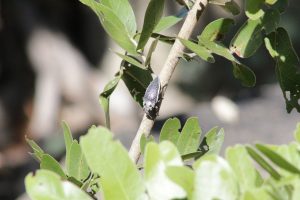Urban dwellers as drivers for change…
Due to rapid urbanisation, forests at the outskirts of cities cleared to pave way for residential places. Land use change of farms in the city and around the city from farming to residential.Rapid urbanization without matched improvements in service provision has seen pressure being put on already stressed electricity supply.
The lack of electricity and the high cost of electricity has forced urban dwellers to resort to trees for energy. Energy is in form of firewood or charcoal. Trees are cut down in the city, in communal areas surrounding the cities and sometimes charcoal is sourced from neighbouring countries for example Mozambique, Malawi and Zambia, proof that environmental degradation is non-spatial.
Rapid urbanization has seen industries increase in numbers to meet the demand of the growing population. Most of these industries become major pollution sources e.g increase in the number of combis, private cars, backyards/street food outlets, tyre burning to extract wire, etc. The burning of fossil fuels is largely believed to be the cause of global warming as greenhouse gases are deposited into the atmosphere. Carbon dioxide is one of the greatest offending fossil fuels. Urban areas especially in most developing have become a death trap for the residents as pollution levels reach alarming levels, contributing to the increase in like cancer, skin diseases and respiratory diseases.
Why urban dwellers have to plant trees
For aesthetics:
Trees beautify landscapes. Trees add beauty to their surroundings by adding colour to an area, softening harsh lines of buildings, screening unsightly views and contributing to the character of their environment. Trees also contribute eye-catching colours to their surroundings, from the different shades of green found in the leaves, the colours found in flowering trees and sometimes even the bark of the tree. They also have the ability to increase the value of properties.

Source of food
For urban dwellers growing of fruit trees will ensure that they have a constant supply of fresh, locally grown food. From a social aspect, fruit trees help people become connected to the growing process while also providing a nutritious food source and food security.

Reduced CO2 Emissions
Trees help offset the effects of CO2 pollution. Trees actually need CO2 to survive. Trees act as a cleaner, or filter for the air, absorbing CO2 and expelling fresh oxygen into the atmosphere. You can do your part for the environment by planting a tree or two in your garden landscape and help to reduce greenhouse gases
Reduced Energy Costs
Trees in the home garden help you to save energy and reduce the cost of utilities, such as electric and water. Trees provide shade for your home can reduce the need for cooling on the occasional hot day. When partial shade-loving plants are incorporated near your fruit tree, they lose less water through evaporation on sunny days, reducing the need for supplemental watering for example lawns and outdoor flowers.
Storm Water Management
Urban areas with few trees have a challenge with managing storm water. Without proper absorption, runoff water gathers and carries pollutants that travel to streams and rivers. These pollutants include plastic, disposable sanitary wears, disposable nappies, containers with harmful chemicals, Agriculture chemicals like fertilizers and herbicides. Runoff also leads to erosion on hillsides and slopes. Trees help to eliminate some storm water management problems and erosion by absorbing some of the runoff and using it for hydration after a rainstorm. For residents with waterlogged yards, the addition of trees may help alleviate some of the drainage problems.
Employment creation
In a community setting, a tree park provides opportunities for residents to learn about sustainable development and earning a living from non-timber products. In some communities trees open the door for green jobs and other small business opportunities for example fruit business, honey business, art and crafts, furniture making, sculpture, etc. This not only helps the community in an economic sense, it also helps the environment by promoting sustainable living.
Animal Habitat
Trees provide essential habitat for many species.

Latest posts by Shamiso Winnet Mupara (see all)
- Empowering Marange’s Youth: Celebrating Africa Environment Day at Holy Ghost High School - March 14, 2024
- Sowing Seeds of Hope: Rejuvenating Chiadzwa’s Environment Through Tree Planting” - March 11, 2024
- 5 Years On. Growing Green: Cultivating a Sustainable Future For Macheke’s Children - March 11, 2024
Recent Posts



